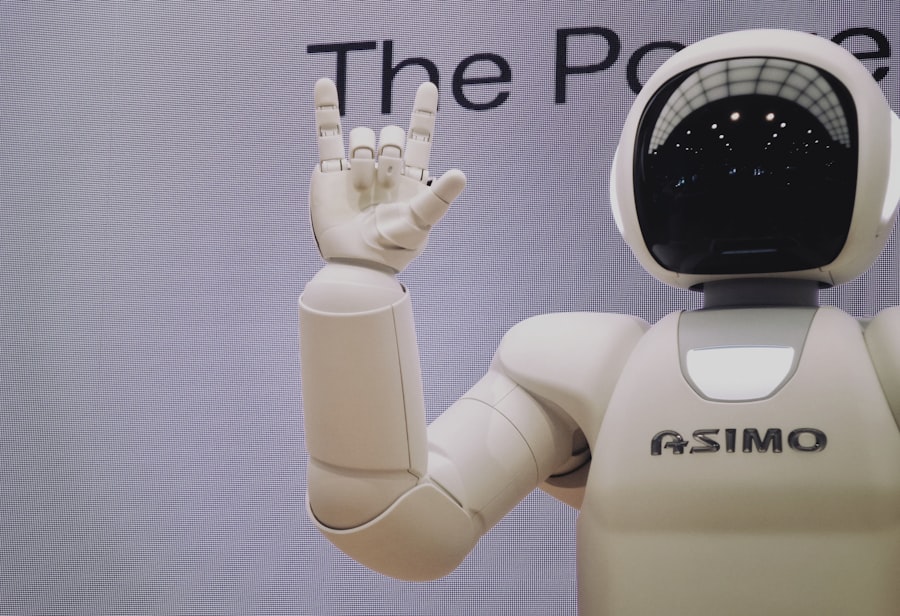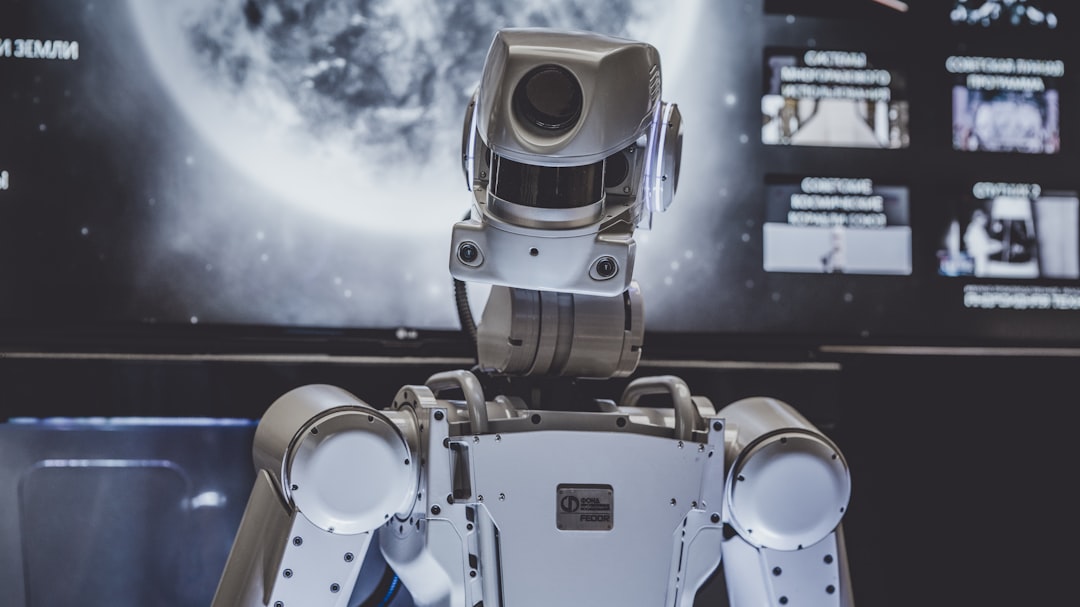As you navigate through the modern workplace, you may have noticed a significant shift towards automation. This transformation is not merely a trend; it represents a fundamental change in how work is performed across various sectors. Automation has been steadily gaining traction, driven by advancements in technology, artificial intelligence, and robotics.
You might find it fascinating to consider how these innovations are reshaping your daily tasks, streamlining processes, and enhancing productivity.
In recent years, the integration of automated systems has accelerated, particularly in industries such as manufacturing, logistics, and even customer service.
You may have encountered chatbots that handle customer inquiries or robots that assist in warehouse operations. These developments are indicative of a broader trend where businesses are increasingly relying on technology to improve efficiency and reduce costs. As you observe this evolution, it’s essential to recognize that while automation can lead to significant improvements in productivity, it also raises questions about the future of work and the roles that humans will play in an increasingly automated environment.
Key Takeaways
- Automation is on the rise in the workplace, leading to significant changes in job roles and responsibilities.
- Robots are impacting traditional manual labor jobs, leading to displacement and the need for reskilling and retraining.
- Industries such as manufacturing, transportation, and retail are most affected by automation, with potential for increased productivity and efficiency.
- Advantages of automation include improved efficiency and reduced human error, while disadvantages include job displacement and ethical implications.
- The government plays a crucial role in addressing job displacement through policies and programs for reskilling and retraining the workforce.
The Impact of Robots on Traditional Manual Labor Jobs
As automation continues to permeate various sectors, you may be concerned about its impact on traditional manual labor jobs. The introduction of robots and automated systems has led to a decline in demand for certain types of jobs that were once considered stable and secure. For instance, roles in manufacturing and assembly lines have been particularly vulnerable to automation, as machines can perform repetitive tasks with greater speed and precision than humans.
This shift can create a sense of uncertainty for those who have dedicated their careers to these positions, as the landscape of employment is rapidly changing. However, it’s important to recognize that while some jobs may be lost due to automation, new opportunities are also emerging. You might find it interesting to note that the rise of robots has led to an increased demand for skilled workers who can design, maintain, and operate these automated systems.
This shift necessitates a reevaluation of your skills and career trajectory. Embracing the changes brought about by automation can open doors to new fields and roles that require a different set of competencies, ultimately leading to a more dynamic workforce.
Industries Most Affected by Automation

Certain industries are more susceptible to the effects of automation than others, and as you consider your career path, it’s crucial to be aware of these trends. Manufacturing has long been at the forefront of automation, with robots taking over tasks such as welding, painting, and assembly. You may have seen firsthand how factories are increasingly adopting automated solutions to enhance production efficiency.
Similarly, the transportation sector is experiencing a transformation with the advent of self-driving vehicles and drones, which could revolutionize logistics and delivery services. Beyond manufacturing and transportation, the retail industry is also undergoing significant changes due to automation. You might have noticed the rise of self-checkout kiosks and online shopping platforms that utilize sophisticated algorithms to streamline inventory management and customer service.
These advancements not only improve efficiency but also change the nature of jobs within the retail sector. As you explore potential career opportunities, it’s essential to consider how automation is reshaping these industries and what skills will be in demand in the future.
The Advantages and Disadvantages of Automation
| Advantages of Automation | Disadvantages of Automation |
|---|---|
| Increased productivity | Initial high cost of implementation |
| Improved accuracy | Job displacement |
| Cost savings in the long run | Dependency on technology |
| Enhanced safety in hazardous environments | Reduced job opportunities for manual labor |
As you reflect on the rise of automation in the workplace, it’s essential to weigh both its advantages and disadvantages. On one hand, automation can lead to increased efficiency, reduced operational costs, and improved accuracy in various tasks. You may appreciate how automated systems can handle repetitive tasks with minimal errors, allowing you to focus on more strategic aspects of your work.
Additionally, automation can enhance safety by taking over dangerous tasks that pose risks to human workers. On the other hand, the rapid adoption of automation raises concerns about job displacement and economic inequality. As machines take over tasks traditionally performed by humans, you might worry about the potential loss of jobs and the impact on livelihoods.
Furthermore, there is a risk that the benefits of automation may not be evenly distributed across society, leading to a widening gap between those who possess the skills to thrive in an automated world and those who do not. Balancing these advantages and disadvantages is crucial as you navigate your career in an evolving job market.
The Role of Government in Addressing Job Displacement
As automation continues to reshape the workforce landscape, the role of government becomes increasingly important in addressing job displacement. You may wonder how policymakers can effectively respond to the challenges posed by automation and ensure that workers are supported during this transition. One approach is through the implementation of retraining programs that equip displaced workers with new skills relevant to emerging industries.
By investing in education and vocational training, governments can help you adapt to the changing job market. Additionally, social safety nets such as unemployment benefits and job placement services play a vital role in supporting individuals affected by automation. You might find it reassuring to know that governments are exploring innovative solutions like universal basic income (UBI) as a means to provide financial stability for those whose jobs are at risk due to technological advancements.
By fostering collaboration between businesses, educational institutions, and government agencies, a comprehensive strategy can be developed to mitigate the impact of automation on employment.
The Future of Work in an Automated World

As you contemplate your future career prospects in an automated world, it’s essential to consider how work itself will evolve. The traditional 9-to-5 work model may become less relevant as remote work and flexible schedules gain popularity. Automation has already demonstrated its ability to facilitate remote collaboration through digital tools and platforms.
You might find yourself working alongside colleagues from around the globe, leveraging technology to enhance productivity and creativity. Moreover, the nature of work is likely to shift towards more project-based or freelance opportunities as businesses adapt to changing demands. This evolution could provide you with greater autonomy over your career choices and allow you to pursue diverse interests.
However, it also necessitates a proactive approach to skill development and networking as you navigate this new landscape. Embracing lifelong learning will be crucial in ensuring that you remain competitive in an ever-changing job market.
Reskilling and Retraining the Workforce for New Job Opportunities
In light of the rapid advancements in automation, reskilling and retraining have become paramount for workers like yourself seeking new job opportunities. As certain roles become obsolete, acquiring new skills will enable you to transition into emerging fields that require a different set of competencies. You may find it beneficial to explore online courses, workshops, or vocational training programs that focus on high-demand skills such as data analysis, programming, or digital marketing.
Employers are increasingly recognizing the importance of investing in their workforce by providing training programs that facilitate skill development. You might discover that many companies are willing to support your growth by offering resources for continuous learning. By taking advantage of these opportunities, you can position yourself as a valuable asset in an automated workplace while also enhancing your career prospects.
Ethical and Social Implications of Automation
As you engage with the topic of automation, it’s essential to consider its ethical and social implications. The rapid integration of technology into the workplace raises questions about privacy, surveillance, and data security. You may feel concerned about how your personal information is handled by automated systems or how algorithms influence decision-making processes within organizations.
It’s crucial for businesses to prioritize ethical practices when implementing automation to ensure that workers’ rights are protected. Moreover, there is a growing discourse around the societal impact of automation on inequality and access to opportunities. As certain jobs become automated, marginalized communities may face disproportionate challenges in adapting to these changes.
You might find it important to advocate for inclusive policies that promote equitable access to education and training resources for all individuals affected by automation. By addressing these ethical considerations, society can work towards a future where technology serves as a tool for empowerment rather than exclusion.
The Potential for Increased Productivity and Efficiency
One of the most compelling arguments in favor of automation is its potential for increased productivity and efficiency across various industries. As you observe automated systems taking over repetitive tasks, you may appreciate how this allows human workers like yourself to focus on higher-value activities that require critical thinking and creativity. The ability to streamline processes can lead to faster turnaround times and improved quality in products and services.
Furthermore, automation can enhance collaboration among teams by providing real-time data analysis and insights that inform decision-making processes. You might find it exciting to think about how technology can facilitate innovation by enabling teams to experiment with new ideas without being bogged down by mundane tasks. As businesses harness the power of automation, they can create a more agile work environment that fosters creativity and drives growth.
The Psychological Effects of Job Displacement
The psychological effects of job displacement due to automation cannot be overlooked as you consider the broader implications of this trend. Losing a job can lead to feelings of anxiety, uncertainty, and diminished self-worth for many individuals. You may empathize with those who face challenges in adjusting to new career paths or who struggle with feelings of inadequacy when competing against automated systems.
It’s essential for individuals experiencing job displacement to seek support from their communities and mental health professionals during this transition period. Building resilience through networking and engaging with others who share similar experiences can help alleviate feelings of isolation. Additionally, fostering a growth mindset—embracing challenges as opportunities for learning—can empower you to navigate this changing landscape with confidence.
Embracing Automation: Adapting to the Changing Workforce Landscape
Ultimately, embracing automation requires a proactive approach as you adapt to the changing workforce landscape. Rather than viewing automation solely as a threat, consider it an opportunity for growth and innovation within your career. By staying informed about industry trends and emerging technologies, you can position yourself as a forward-thinking professional ready to thrive in an automated world.
You might find it beneficial to connect with mentors or industry leaders who can provide guidance on navigating this transition successfully. By embracing change with an open mind and a willingness to adapt, you can not only secure your place in the workforce but also contribute positively to shaping its future direction.
In conclusion, while automation presents challenges such as job displacement and ethical considerations, it also offers opportunities for increased productivity and innovation within various industries. By understanding these dynamics and actively participating in your own reskilling journey, you can navigate this evolving landscape with confidence and resilience.
In recent years, the conversation around automation and its impact on the job market has intensified, with many experts predicting that robots and AI will replace a significant number of jobs. An insightful article on this topic can be found on How Wealth Grows, which delves into the types of jobs most susceptible to automation and the potential economic implications. For a deeper understanding of how automation might reshape the workforce, you can read the full article by visiting How Wealth Grows. This resource provides a comprehensive analysis of the evolving job landscape and offers strategies for adapting to these changes.
FAQs
What jobs are likely to be replaced by robots?
Some of the jobs that are likely to be replaced by robots include repetitive and routine tasks such as data entry, assembly line work, and certain types of customer service roles.
Why are these jobs likely to be replaced by robots?
These jobs are likely to be replaced by robots because they involve tasks that are repetitive, predictable, and can be easily automated using technology and artificial intelligence.
What are the potential impacts of robots replacing these jobs?
The potential impacts of robots replacing these jobs include job displacement for workers in these roles, the need for retraining and upskilling for new types of jobs, and potential economic and social implications.
What can workers in these jobs do to prepare for the potential impact of automation?
Workers in these jobs can prepare for the potential impact of automation by acquiring new skills, staying updated on technological advancements, and exploring opportunities in emerging industries that are less likely to be automated.
Are there any jobs that are less likely to be replaced by robots?
Jobs that involve creativity, critical thinking, complex problem-solving, and emotional intelligence are less likely to be replaced by robots, as these skills are difficult to replicate with current technology.
